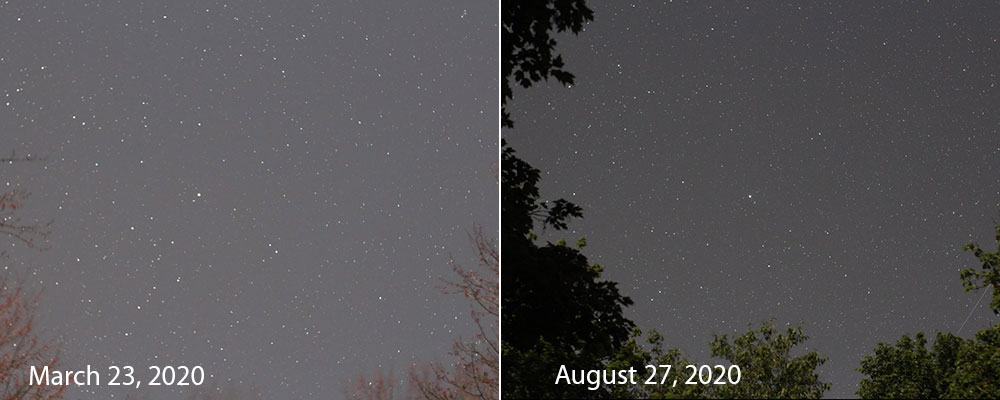Student Kathryn Huth set out to conduct astronomical experiments when she noticed that — amidst the pandemic — she could see more stars in the sky.
I am a 15-year-old student from Pennsylvania and for the last three years, I have been designing and conducting astronomy projects and competing in regional and state science competitions.
This year, I used astronomy to show COVID-19’s impact on the environment. Contrary to the pandemic's impact on humans, the environment thrived as human activity slowed — a silver lining in a situation that has brought so much despair.
In 2019 I started photographing the night sky from near my house in order to determine Moon brightness. I had already placed first in one competition and had a promising season ahead of me, but a week before my second competition, COVID-19 shut down the world. I competed online and was still able to gain a few awards and a college scholarship.
Throughout the pandemic, I never stopped my research. I continued my hobby of astrophotography, and I also continued photographing the star field around Polaris. As I analyzed the images, I realized that more and more stars had become visible as we went deeper into quarantine.

From March to June 2020, I took 22 pictures of the star field around Polaris on nights when the weather was clear during the Red and Green phases of reopening Pennsylvania, then I counted and recorded the number of stars in each image. I compared this data to the photos I took in 2019. Statistical tests showed that the greatest number of stars were visible in the Red phase and as Pennsylvania reopened and human activity increased, the number of stars visible in the photographs decreased and were comparable to 2019 levels.
Light pollution is often overlooked when we hear about environmental concerns. We often hear of water, air, and land pollution. But society also needs to be cautious about the amount of excess light we put out in the world. Light pollution can cause medical issues in humans, slow or stop the growth cycle of plants, decrease reproduction rates in animals, and veil the beautiful night sky. I hope to bring awareness to this issue, which will only continue to worsen unless more people become aware of encroaching artificial light.
 1
1








Comments
MeadeLX200
October 11, 2021 at 9:26 pm
GREAT story about light pollution and The covid 19 pandemic. Would like to see some of the science this amazing 15 year old girl does. I think she's going to be an amazing person in her future. Thank you very much to SkynTelescope for publishing this article it is GREATLY enjoyed.
You must be logged in to post a comment.
You must be logged in to post a comment.